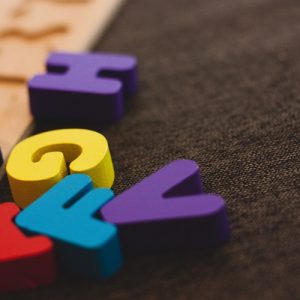
30 Jul Teaching Children the Alphabet
How to Teach Children the Alphabet? We Asked One of the Top Experts Dr. Jan Wasowicz

When teaching young children the letters of the alphabet, do we teach them first to say the letter names or the letter sounds?
Dr. Wasowicz: “It depends,” applies here.
“Students need to learn how to form letters and need to know letter names. If that is our objective in a lesson, we use letter names, and the student says the letter name as they form the letter.
Students also need to learn and make connections between sounds and letters -phoneme (sound)-grapheme (print) mapping- to read and spell words. If alphabetic principle, letter-sound relationships, encoding (spelling) and decoding of words, and development of robust lexical (vocabulary) representations of words and word parts is our objective in a lesson, we have the students say sounds as they write (or read) the letters.
With a student who already knows her letter names, can form all the letters but needs to improve letter formation/handwriting skills, and also needs to improve phonological awareness (when listening to words or sounds), phonics (print-sound relationship), and reading and spelling skills, having the student say the sounds as she writes the letters allows us to simultaneously address multiple learning objectives at once.
As Dr. Virgnia Berninger says, the teaching of reading and writing is a very, very complex process. She writes, “Literacy instruction drawing on integrated reading-writing is like fine cuisine, which is made from multiple ingredients.”
When working with students, I often feel like an orchestra conductor leading an assembly of musical instruments (some of those instruments are not so well-tuned!). The processes of reading and writing—and the literacy instruction itself—are a dynamic interplay of multiple linguistic, cognitive, and sensorimotor elements that need to be called upon at just the right moment, in synchrony and fully integrated with each other for a masterful performance.
What we teach at a given point in time and how we teach something depends on many factors. Not the least of which is our instructional learning objective.
Effective teaching of reading and writing requires us to know what the individual student brings to the table. It also requires us to understand the WHY we do what we do.
When we understand the who (the individual student) and understand the why, we know what to do when.”
———-
Dr. Jan Wasowicz has 35+ years of experience as a language, literacy, and learning specialist working with students who have language-based reading, writing, and spelling disorders in a variety of educational settings, including public schools, Head Start programs, and private practice.
Dr. Wasowicz has taught numerous university-level courses and is frequently invited to speak about best practices in literacy assessment and instruction at professional conferences.
She is the inventor of the Earobics® software, author of SPELL-Links to Reading & Writing, and lead moderator of the SPELLTalk professional listserv — the FREE professional discussion group dedicated to improving literacy through discussion of research and evidence-based best practices.
Dr. Wasowicz is an ASHA-certified, IL-licensed, and FL-licensed speech-language pathologist, and she holds a professional educator license with multiple endorsements from the State Teacher Certification Board of Illinois. She is also the founder and CEO of Learning By Design, Inc. www.learningbydesign.com.
Craig Selinger
Latest posts by Craig Selinger (see all)
- Finding The Best Tutor/Learning Specialist For A Student With A Learning Difference - July 14, 2022
- 👉 What to Look for in Your Child’s ADHD Coach 👈 - June 11, 2022
- 👍 8 Effective Ways to Practice Positive Parenting for Teens 👍 - June 9, 2022

No Comments